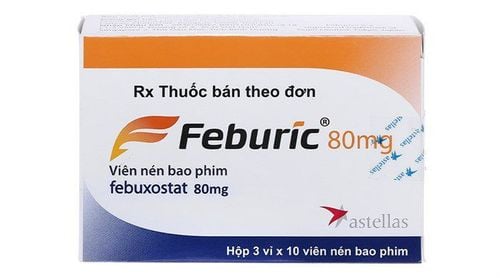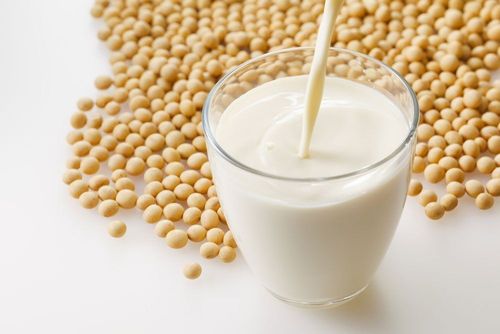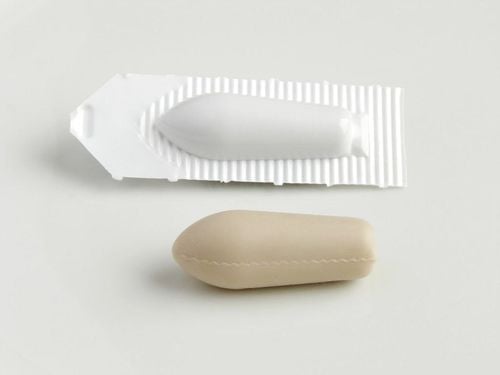Milurit is a medication used to treat hyperuricemia and gout. In addition to the main ingredient, allopurinol 300 mg, each Milurit 300mg tablet contains excipients such as microcrystalline cellulose, gelatin, sodium starch glycolate, magnesium stearate, colloidal anhydrous silica, and others that help ensure the tablet's mass, solubility, and stability.
1. What are the uses of Milurit?
With the main ingredient being allopurinol, Milurit is usually indicated in the following specific cases:
- Patients with gout, primary hyperuricemia, secondary hyperuricemia, and secondary hyperuricemia associated with blood disorders.
- Used for the prevention and treatment of patients with gouty nephropathy, hyperuricemia caused by increased radiation-induced cell death, and/or hyperuricemia linked to chemotherapy for lymphoma, leukemia, uric acid stones, and calcium oxalate stones resulting from uric acid urine and other malignancies.
- In addition, Milurit is also indicated in some other cases when prescribed by a doctor.
Milurit should not be used in the following cases:
- Patients with a history of allergy or hypersensitivity to any component of Milurit.
- People with severe liver disease.
- Patients with severe renal impairment, uremia, pregnant and breastfeeding women.
- Patients with idiopathic hemochromatosis (even if only present in family history).
- Do not start allopurinol treatment in patients with acute gout attacks.
2. Dosage and administration of Milurit
Milurit should be used as prescribed by a doctor. The best time to take Milurit is after meals, with plenty of water. You can refer to the following Milurit dosage:
2.1. Milurit Dosage for Adults
- The recommended starting dose is 150mg/day. If necessary, the daily dose can be gradually increased to 150mg until the desired effect is achieved, checking serum uric acid every 1 to 3 weeks.
- The maintenance dose is 300 - 600 mg/day. The dose can be increased to a maximum of 900 mg/day. When the daily dose of Milurit exceeds 300mg/day, it needs to be divided into 2-4 equal doses.
- Milurit dosage by weight: 2 - 10 mg/kg body weight/day
- Use in cancer patients: Start Milurit 1-2 days before anticancer therapy. Then use a dose of 600mg/day for 2-3 days and a maintenance dose in the following days based on serum uric acid levels.
2.2. Milurit Dosage for Children
For secondary hyperuricemia associated with malignant blood disorders, cancers, or certain enzyme disorders, the usual dose of Milurit is 10-20mg/kg body weight/day depending on the size of the tumor, the number of peripheral blasts or the degree of bone marrow infiltration.
2.3. Milurit Dosage for Elderly, Patients with Renal Impairment, and Hepatic Impairment
Use Milurit at the minimum effective dose, while still achieving the highest effectiveness, monitoring liver and kidney function. To reduce the toxicity of Milurit, the dose should be reduced according to the degree of liver and kidney failure.
The recommended dose of Milurit for patients with renal impairment with creatinine clearance less than 20ml/min is not more than 150mg/day. It is also possible to consider using a Milurit dose of 150mg with longer intervals between doses than 1 day. Monitor plasma allopurinol concentration, ensuring it does not exceed 15.2 mg/L.
3. Side effects of Milurit
Milurit can cause side effects including:
- Increased alkaline phosphatase levels, increased serum transaminase, thrombocytopenia, aplastic anemia, and agranulocytosis.
- Hepatitis, epileptic seizures.
- Itching, maculopapular rash, urticaria, skin peeling.
- Nausea, vomiting, abdominal pain, diarrhea, headache, drowsiness, fatigue, dizziness.
- When starting treatment with Milurit, it can cause an acute gout attack.
4. Precautions When Using Milurit
Possible side effects of Milurit include: drowsiness, dizziness, fatigue, and reduced concentration. Therefore, after taking Milurit, avoid activities such as driving, operating machinery, and tasks requiring alertness.
Currently, no data shows that Milurit can cause abnormalities in the fetus. However, caution should be noticed with the use of Milurit in pregnant women, only used when truly necessary, the benefits outweigh the risks, and with the prescription and monitoring of a doctor.
Milurit can be passed to the infant through breast milk. Therefore, it is best to avoid or limit the use of Milurit during breastfeeding.
5. Drug Interactions
Milurit can interact with the following drugs:
- When Milurit is used concurrently with drugs such as azathioprine or 6-mercaptopurine, Milurit increases the toxicity of these drugs by inhibiting their metabolism. Consequently, the dose of azathioprine and 6-mercaptopurine must be reduced to 1/4 – 1/3 of the normal dose.
- When using Milurit with adenine arabinoside (vidarabine), it increases the half-life of adenine arabinoside.
- When using Milurit with cytotoxic drugs such as cyclophosphamide, bleomycin, doxorubicin, and mechloroethamine: it increases the risk of hematopoietic damage.
- When used with chlorpropamide: it increases the risk of prolonged hypoglycemia when kidney function is impaired.
- When using Milurit with drugs that increase uric acid excretion, probenecid, sulfinpyrazone, and high-dose salicylates: it reduces the effect of Milurit.
- Allopurinol inhibits the metabolism of theophylline and aminophylline.
- When using Milurit with cyclosporine: it increases the toxicity of cyclosporine.
- Increased risk of skin reactions when using Milurit with antibiotics such as ampicillin and amoxicillin.
- When using Milurit with coumarin derivatives: it increases the risk of anticoagulation.
To arrange an appointment, please call HOTLINE or make your reservation directly HERE. You may also download the MyVinmec app to schedule appointments faster and manage your reservations more conveniently.








